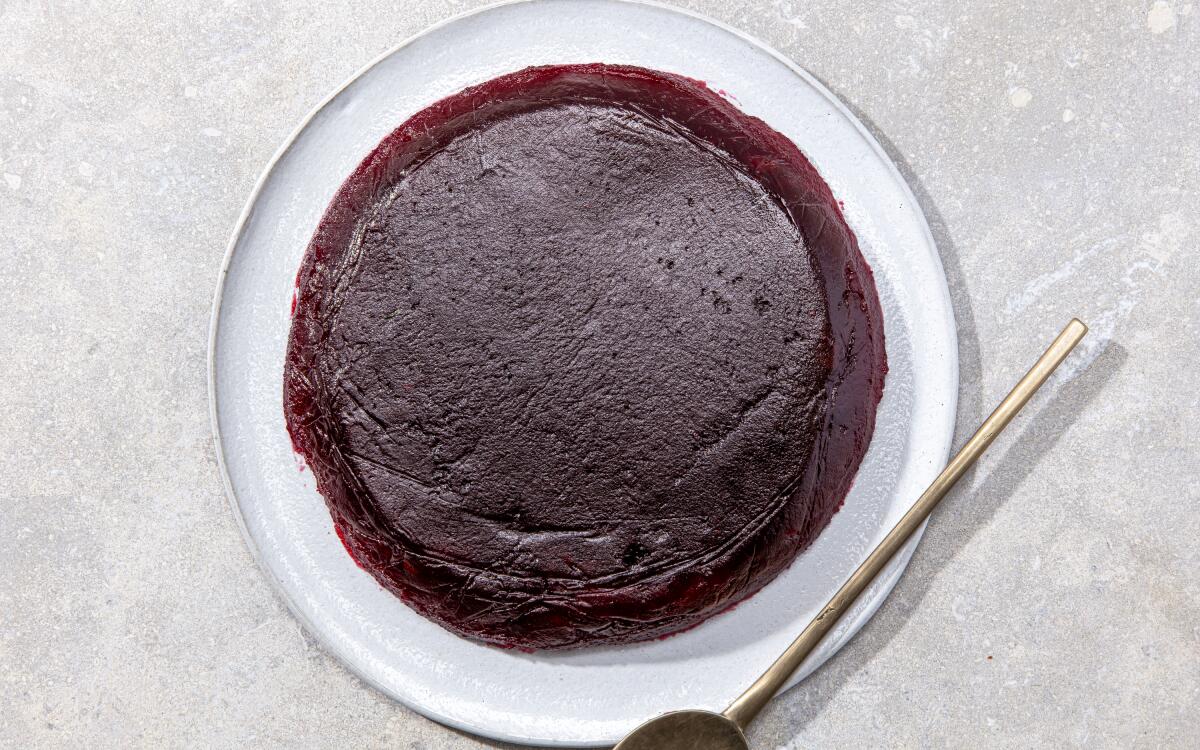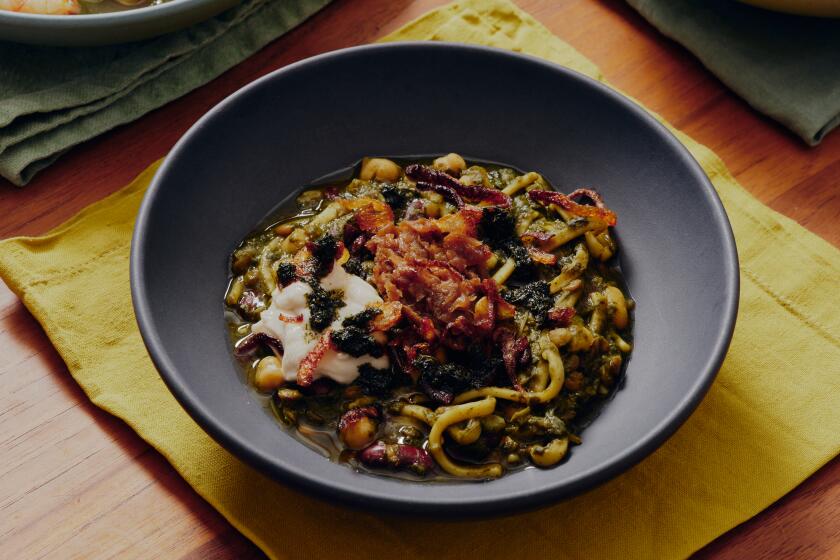Cranberry and Clementine Membrillo

Instead of doing things the way they’ve always been done, here are recipes for Thanksgiving 2020 that throw tradition out the window — at least just this once — and show how the classics can be much easier — and more fun — when you focus on highlighting the qualities in each that really matter.
Making this spoonably soft paste is just like making jam, but don’t let that scare you. As long as you follow the instructions, you’ll have great results. But I won’t lie: This mixture does spit and sputter a little, but no more than when you’re making tomato sauce. In any case, be prepared for some splatters and be sure to use a long-handled spatula or wooden spoon to keep your hand far above the action. You’ll need six to 10 orange-like citrus — clementine, minneola, tangerine, Cara Cara, blood orange or navel oranges — depending on the type you use, to get to 1 cup juice.
Place the cranberries and orange juice in a medium saucepan and place over high heat. Once the juice comes to a full rolling boil, reduce the heat to medium-low, cover and cook, undisturbed, until the cranberries burst and are very tender, about 10 minutes. Using an immersion blender or regular blender, puree the cranberries until very smooth. If you have the patience and/or desire, pass the puree through a fine sieve to remove the seeds. You should have about 2 1/4 cups. Rinse the pan clean and reserve.
Meanwhile, prepare a 2- to 3-cup mold or 8-by-4-inch loaf pan: Dip the corner of a folded paper towel or your fingers in some oil, then wipe it all over the inside of the mold or pan so it’s well-greased, focusing especially on any intricate nooks. Place a sheet of plastic wrap in the mold and press it flush against the surface as best you can, letting any excess hang over the edge; grease the plastic wrap too.
Return the cranberry puree to the pan, stir in the sugar, lemon juice and salt and place over medium-high heat. Once bubbles cover the surface of the puree, set a timer and continue cooking, stirring occasionally with a long-handled heatproof spatula or wooden spoon to keep the sides of the pan clean and to keep the mixture from burning on the bottom of the pot. After 10 minutes, the puree will appear lava-like and will leave a trail for half a second when you drag your spatula across the bottom. Continue cooking, and after an additional 2 to 3 minutes, the puree will pull away slightly from the side of the pan when you stir it; it is now ready. Immediately remove the pan from the heat and stir in the citrus zest until evenly incorporated.
Scrape the puree into the prepared pan or mold, smoothing the top. Let stand until completely cooled and set, at least 2 hours or overnight. Use the overhanging plastic to cover the paste once it fully cools.
When ready to serve, peel back the plastic overhang and place a serving plate upside down over the mold. Invert the mold and plate together, allowing the paste to fall onto the plate; if it doesn’t right away, tug gently on one corner of the plastic overhang until it does. Remove the mold, and peel away and discard the plastic wrap before serving.
Get our Cooking newsletter.
Your roundup of inspiring recipes and kitchen tricks.
You may occasionally receive promotional content from the Los Angeles Times.
















